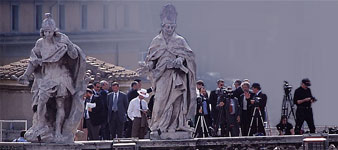Marketing in every day business requires customer orientation. Understanding customer behaviour is important because satisfying the customer is the key to success. Does the Church (as a non-profit organisation) have customers as well? What do the customers consider value? The customers of the Church are an odd mix of true believers, atheists, agnostics, and those who once believed in Christianity but are now unsure. How can especially people more or less far away from the Church be addressed?
The subjective-matter of the empirical study which is to be presented was to analyse the visitor's satisfaction of the exhibition of "Ansichten Christi" ("Images of Jesus Christ"), which was held in Cologne on the occasion of the World Youth day 2005. One of the major aspects of the study was to see the influence of the audio guide art descriptions on the visitors' overall satisfaction. The content of the audio guide was more of catechetical nature rather than art historian, therefore the insights of this study can also be useful for church communications. The theoretical framework of the analysis was based on an attitude model which in the scientific literature is widely accepted for analysing advertising effectiveness. Variables like involvement, discrepancy with the delivered information and emotions played an important role for overall satisfaction with the visit. Over 400 visitors filled out a questionnaire after their visit of the exhibition.
The study concluded that audio guide information had a great impact on the visitor's emotional experience, which influenced the overall satisfaction of the visit. Most people responded positively to Catholic explanations of the art. The question that emerge from this result is: Is there a chance to reach people with the message of the Church via art in museums or other cultural attractions?



